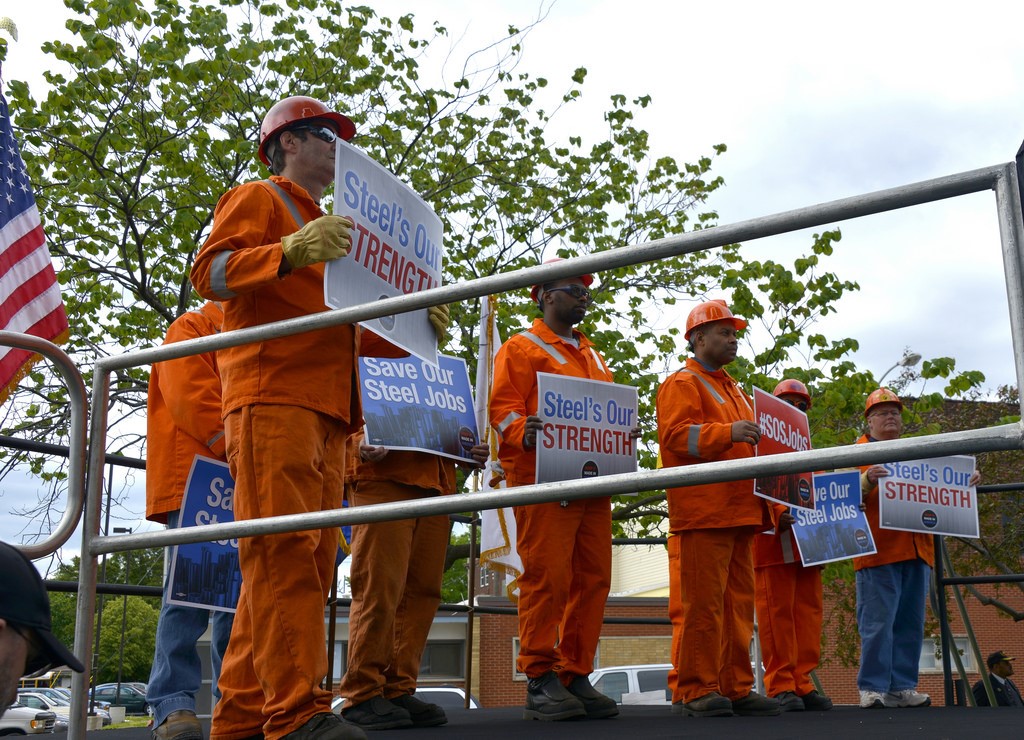
The storied steel mill was barely hanging on by 2018. But trade action allowed Granite City Works to hire workers and make improvements.
June 5, 2018 was a red-letter day at the U.S. Steel mill in Granite City, Ill. That was the day the versatile steelmaking facility fired up the first of its two blast furnaces after they were idled for two years and two months.
Granite City Works, located directly across the Mississippi River from St. Louis, had laid off 1,800 employees in December 2015. The mill’s future looked bleak because of the dumping of unfairly traded steel into the United States from China and other foreign countries.
But in March 2018, Section 232 trade action was announced, and a 25% tariff was placed on steel imports. It saved Granite City Works.
“The 232 tariffs mean sustainability for us, and obviously keeps the dogs off the porch, the other countries that are illegally dumping,” said Dan Simmons, president of United Steelworkers Local 1899. “The tariffs give us an opportunity to level the field and compete with them and it means the world to us right now. Until we figure out a way to rewrite some of our antiquated trade laws, to protect the manufacturing sector here in the United States from getting illegally dumped, that 232 is exactly what was needed to give us some breathing room to reinvest some capital into the mills and get a little more modernized and a little more competitive.”

USW Local 1899 today represents approximately 1,400 steelworkers at the fully integrated mill. Simmons has worked at Granite City Works for 43 years. He started his steelmaking career at the age of 18 and has surely seen the ups and downs of a volatile American steel industry.
Simmons feels the Section 232 tariffs are what have saved the American steel industry and revitalized Granite City Works into one of the most productive steel mills in the country.
“The 232 tariffs are what has got us fired up. The 232 tariffs are what is securing pricing. There is still some dumping, but it is built into the 232 tariffs where they have some quotas and numbers, they can dump but then they have to start paying tariffs,” Simmons said. “It gives us breathing room and prevents some of the excess dumping of foreign steel.”
When Simmons hired in at Granite City Works in 1978, there were approximately 4,800 employees working at the mill. In 2018, with steelmaking operations shut down, the Granite City facility was barely hanging on with less than 700 workers who were primarily doing finishing work, mostly on steel slabs manufactured at U.S. Steel’s Gary Works in Indiana and Edgar Thompson Works in Pennsylvania.
“We were seeing, and I am a baseball player, so my analogies are always a lot in baseball, but we were hitting singles with these trade cases which got us little pieces of our doors open,” Simmons said. “We had some skeleton crews in different departments seeing small signs of life, just hitting singles.
“The 232 was the one we needed to get the steel making back open and that’s what it did. With that it was kind of like hitting that home run with the 232 tariffs and that enabled to call all our laid-off people back, get the doors back open and get the blast furnaces back lit and making steel.
“We had been getting nibbles but when the 232 was passed, that’s when we hit the home run and we got the doors wide open and started to make steel here again. Prior to that, we weren’t making steel, we were just processing some products.”
Simmons and his USW workforce went through years of uncertainty. Would there by layoffs? Would the mill shut down permanently? The apprehension in the community created doubts about the security of steelworker’s jobs and the businesses they supported.
But today, Simmons is more optimistic than ever.
“We can do so many things here,” he said. “We can make everything from automotive to OCTG (Oil Country Tubular Goods) to hot band all the way to finished products. We do coating, galvanizing and are successful with high tensile steel.
“U.S. Steel is waiting for more sustainability and without this 232 who knows what we would be doing. We need this 232. And that infrastructure bill? Oh my God, if we get an infrastructure bill it will be the best thing that could happen to this mill and our community.”
As a 43-year veteran and leader of America’s steelworkers, Dan Simmons is comfortable with the state of the industry today and has a definitive message for President Biden.
“Tell him we still need those tariffs in place, and we would appreciate his support on those tariffs,” Simmons said. “We have to have the tariffs continue to be in place to allow us the opportunity to compete with those countries that know how to circumvent the trade laws.”
